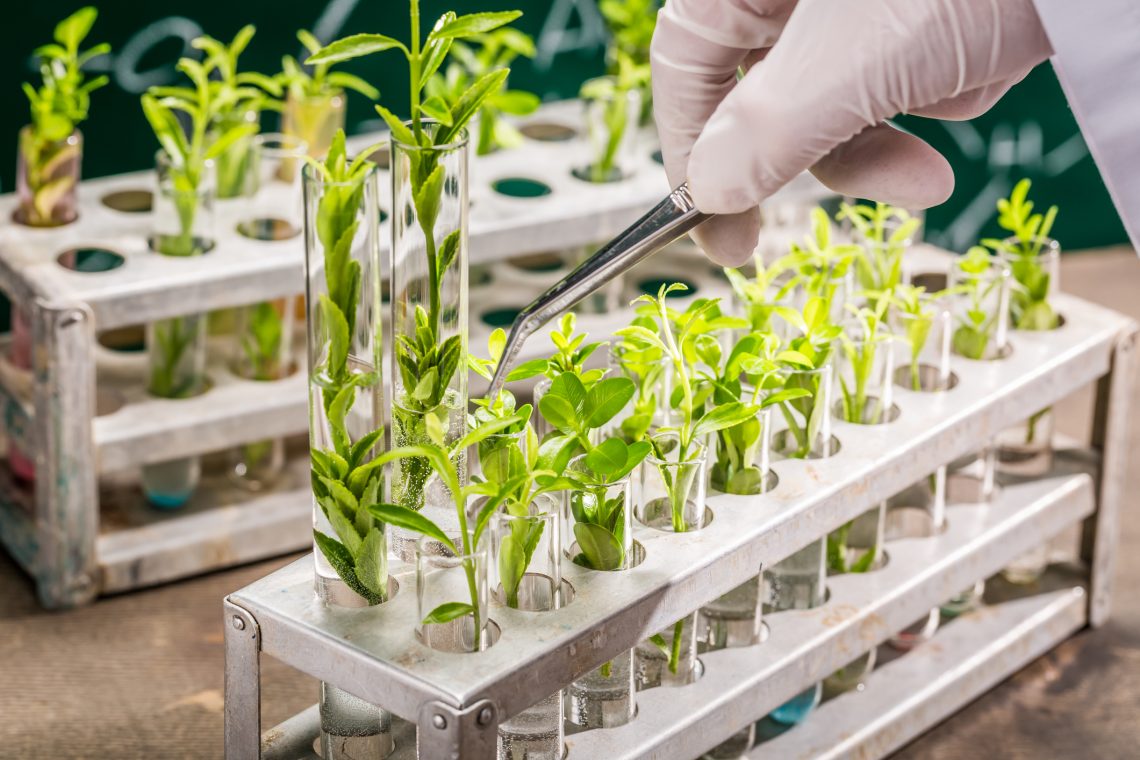Technology will be key to improving crops more quickly to feed a growing world.
It’s no secret that a rapidly growing population that may reach nearly 10 billion people by 2050 is expected to put a strain on the world’s food supply. And not only will we need more food, but it will have to be grown in areas that haven’t traditionally grown crops or that are dealing with the effects of a changing global climate.
The U.S. Department of Agriculture’s National Institute of Food and Agriculture (NIFA) expects advances in plant breeding to play a significant role in addressing those needs. Parag Chitnis, deputy director of NIFA, outlined the agency’s vision in a presentation to the National Association of Plant Breeders, emphasizing the importance of data utilization, genomics, technology-enabled phenotyping, and cutting-edge gene-editing technology.
“It’s really an exciting time because new ways of breeding crops are coming into place,” Chitnis says. “Bringing new crop varieties to the producers in a shorter time frame is something these technologies will help breeders do.”
In addition to speeding the process from initial crosses to farmable crops and increasing yield, Chitnis says breeders will be diversifying the types of foods people eat and improving their nutritional content.
“Even though we are talking about needing more food in the future, it’s not just the quantity; it’s the complexity of the demand that is changing,” Chitnis says. “Agriculture is changing. People are changing. Places where food is grown are changing. The types of food we grow are changing. Breeders need to be thinking about producing different varieties that will grow under different conditions.”

Geoff Graham, vice president of global plant breeding for DowDuPont, says his company is focused on delivering on many of those needs.
“Those are the types of things where you can use plant breeding to select for these growing areas,” Graham says. “What always amazes me is that the power of selection to make products better and expand their regions of adaptation.”
He points to selection for corn hybrids adapted to short growing seasons like Western Canada that mature in approximately 70 days, far quicker than 110 day hybrids for the Central Corn Belt.
Greg Doonan, head of novel algorithm advancement at Syngenta, says the ability to utilize data and push the envelope of technology are key to making big gains in crop production.
“In order to improve the output of the major crops in the world, there needs to be this focus on data analytics and novel focused research,” Doonan says. “We need to accelerate that. We need to improve our genetic gain.”
While there is agreement on the role data and technology will play in improving crops, Wayne Smith, a professor at Texas A&M University and president of the National Association of Plant Breeders, believes expanding the types of crops is a larger challenge, mostly because of money.
“If we cannot find continuous funding for a wheat program or a peanut program or an apple program, how are we going to find consistent enough funding for an amaranth program?” he says. “That’s a steep hill to climb. You’re not going to go find some plant that our ancestors decided not to carry forward as a food source thousands of years ago, and in a short timeframe make it a food source.”
Smith does see a significant opportunity for breeders in developed countries to make major strides in nutrition. While many countries are still working to significantly improve yield, he sees places like the United States poised to take advantage of lower costs associated with testing for nutritional values in foods.
“You don’t have to go back too many years before it was a major expense and slow, slow process to determine protein content in food or the fatty acid profile of an oilseed, for example,” Smith says. “We’re going to have the opportunity to develop more nutritious foods, whereas 50 years ago we just couldn’t do it. We have plenty of calories and plenty of proteins. The next logical thing is to make better calories and better proteins.”
Chitnis says NIFA will be interested in those kinds of projects going forward, offering funding for programs that can have impact on the nutrition, diversification and availability of food.
“We’re interested in giving support for projects that are developing these technologies,” Chitnis says.
For decades, genomics has been a growing part of breeding programs. Chitnis says the amount of data available today, and the ability to analyze it effectively, should be a major part of plant advances.
“Breeders will have more confidence in predicting which lines they will be using based on data,” Chitnis says. “This doesn’t always mean you’re genetically engineering anything. These are detectors for breeding.”
Graham says that cost was long a limiting factor when it came to effectively using genomics widely in breeding programs. But that’s changing.
“We used to pay 35 times what they pay for a genetic data point now,” Graham says. “Now, once we get this data, we can translate that data and predict the performance of varieties or hybrids we’ve never seen in the field before. It greatly expands the size and scope of our breeding engine.”
In other words, breeders don’t have to put as many crosses into a field. They can look at the data and select the most likely candidates to have desired traits, saving significant time and resources.

“We wanted data to drive our decisions. Breeding prior to that had been considered an art. But there is a lot of data in the breeding process from start to finish and the final product now,” Doonan says.
There’s certainly still some art, but genomic data helps plant breeders to narrow the field when it comes to choosing how to proceed in a breeding program.
“You can model and simulate that process. We have years worth of data to feed into models and simulation tools to optimize your breeding program,” Doonan says. “That results in higher confidence and better outcomes.”
There could come a point, Smith says, that genomic breeding solutions overtake traditional breeding methods.
“There’s a lot of speculation that we are approaching the point where genomic data can substitute for screening and visual selections, and we may well get there,” Smith says. “Genomics and markers have allowed us to identify the genes, or at least the genomic area of a chromosome. As we get more and more refined… then we are approaching the theoretical ability to select only on those markers.”
Still, there are reasons to believe that those times are still well ahead of us. Smith says epistatic reactions, in which a change to one gene causes a cascade of changes to others, are still far from being overcome.
“For certain traits, there may be five to 15 genes that are major genes and predominantly control the appearance of a trait. But there may be 100 or more that impact the trait in some smaller way. We are a long way from understanding that,” Smith says. “I think there is still a consensus that, to date, there is still a need and there is no replacement for old-fashioned plant breeding.”
While genotyping technology has declined in price, breeding experts say that phenotyping is still a significant cost that has potential to go down, but not just yet.
“As an organization, the most expensive thing we spend now is on the characteristics of our material, the phenotyping,” Graham says.
That’s also a place Chitnis says NIFA is trying to help. He points to NIFA’s support of the National Robotics Initiative, which funds robotics research and development that have, in some cases, benefited agriculture.
“The advances in drones, autonomous systems and image analysis are producing new results that will help breeders in screening large variation and come up with the traits that are useful in the future,” Chitnis says.
One of the more recent technological advances should be rolling products to the market soon. Gene editing allows scientists to insert, delete or replace DNA coding to change the characteristics of an organism. Graham says DowDuPont should have a new waxy corn variety on the market by the end of the decade that was developed through gene-editing technology.
“We can use the knowledge and biology of the crop to get variability that I wouldn’t have gotten from the traditional breeding or genomics,” he says.
Doonan says breeders are beginning to use gene-editing technology to cut many years out of the process of adding desirable variation or traits
“There’s desirable variation that you want to bring in, but your ability to do that through traditional methods could take decades,” Doonan says. “Genome editing allows for that in a few years.”
For gene editing to have the most impact, however, Graham says it will be critical to engage with consumers, academics, and industry partners to understand the potential of the technology and how to deploy it to develop novel products.
“With any new technology, we need to have transparent discussion on the scientific basis of the technology, the opportunities it provides and how we should manage that technology. At the beginning of the GMO era, the discussion was science-based'” Graham says. “As we deploy any new technology, we need to have a discussion with consumers and society on how we harness its benefit.”










